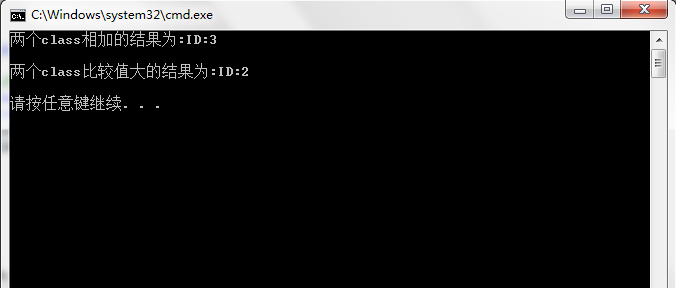通常我们需要对class的相加,相减,相乘 等重载以适应需求, 如caml查询的时候,我们可以定义一个caml类,然后来操作这些查询.
首先,我们定义一个class为Test
public class Test
然后定义两个成员,一个int类型的ID,一个字符串类型的Name.
public int ID; public string Name;
然后定义构造函数
public Test() { } public Test(int id) { this.ID = id; } public Test(int id, string name) { this.ID = id; this.Name = name; }
重载两个class相加的运算符,
public static Test operator +(Test t1, Test t2) { if (t2.Name!= null) { return new Test(t1.ID + t2.ID, t1.Name + t2.Name); } else { return new Test(t1.ID + t2.ID); } }
重载两个class的|运算,其他的运行大家可以自己去试试.
public static Test operator |(Test t1, Test t2) { //显示ID大的class return new Test(t1.ID > t2.ID ? t1.ID:t2.ID); }
下面写了一个对Test这个class的扩展方法,相等于这个class自带的成员方法. 扩展返回发的写法关键是this 后面带类型和参数
internal static class Util { public static string Format(this Test t) { StringBuilder sb = new StringBuilder(); if (t.ID != null) { sb.AppendLine("ID:"+t.ID.ToString()); } if (!string.IsNullOrEmpty(t.Name)) { sb.AppendLine("Name:" + t.Name.ToString()); } return sb.ToString(); } }
调用这个方法:
class Program { static void Main(string[] args) { //测试两个class相加 Test test1 = new Test(1); Test test2 = new Test(2); Console.WriteLine("两个class相加的结果为:"+(test1 +test2).Format()); Console.WriteLine("两个class比较值大的结果为:" + (test1 |test2).Format()); } }
运行结果如下:
如有错误,请大家指正~~~~